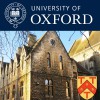Circulation of thought processes as reflected in medieval temple sculptures in Maharashtra.
Changing Iconography on temple walls reflects ‘currents’ of thoughts. As a study-tool of socio-religious history, it has an added advantage. Carved images can be destroyed but not ‘corrupted’ thus no ‘copying errors’ like Manuscripts.
In medieval times majority of people were illiterate. They could come to the temple site but not everyone was allowed entry. Under the circumstances, Preceptor priests made use of sculptures on outer walls of temples to illustrate tenets of their sect (Non-verbal mass communication).
Iconography of three medieval temples is illustrated to make the point.
• Ambarnath temple, Ambarnath.
• Bhuleshvar Temple, Malshiras.
• Aundha Naganath Temple, Aundha.
Ambarnath iconography illustrates Shaiva Siddhanta theology, and includes many Brahma images, proving Brahma was still in worship in this era, further substantiated by contemporaneous life size images of Brahma found in Nalasopara and Thane. Surya has been absorbed into Shaiva pantheon and relegated to a minor deity, small image of Surya on the adhishthana, not on the main wall. A hint of this trend is seen at Modhera Surya temple, Gujarat. The temple has Surya in the sanctum but the hall has two parts, one has twelve Adityas on the wall, the other has twelve (‘dvadasha’) Gauris!
Bhuleshvar temple shows the influence of Nath ideology. Characters portrayed here fight their own battles rather than seek divine help. As a last resort they use seemingly unethical means, whether in Mahabharata or Ramayana episodes. Rama shooting at Vali from behind a tree is one such example where circumstances left Rama no choice.
At Aundha Naganath, sculptures of a woman leading an Elephant brigade line the balustrades of porch steps, a remarkable acceptance of “Woman Power’ for that era.




